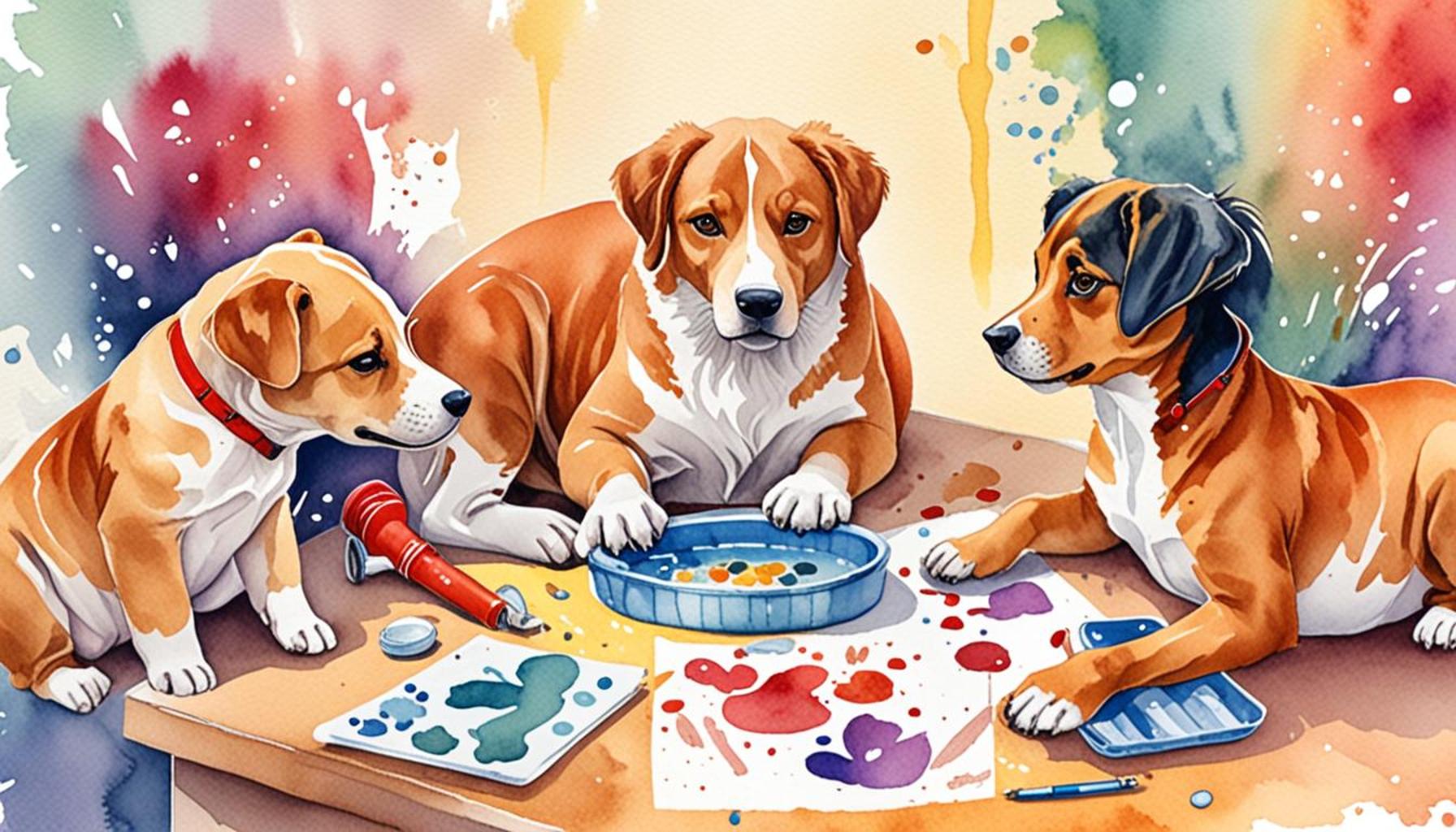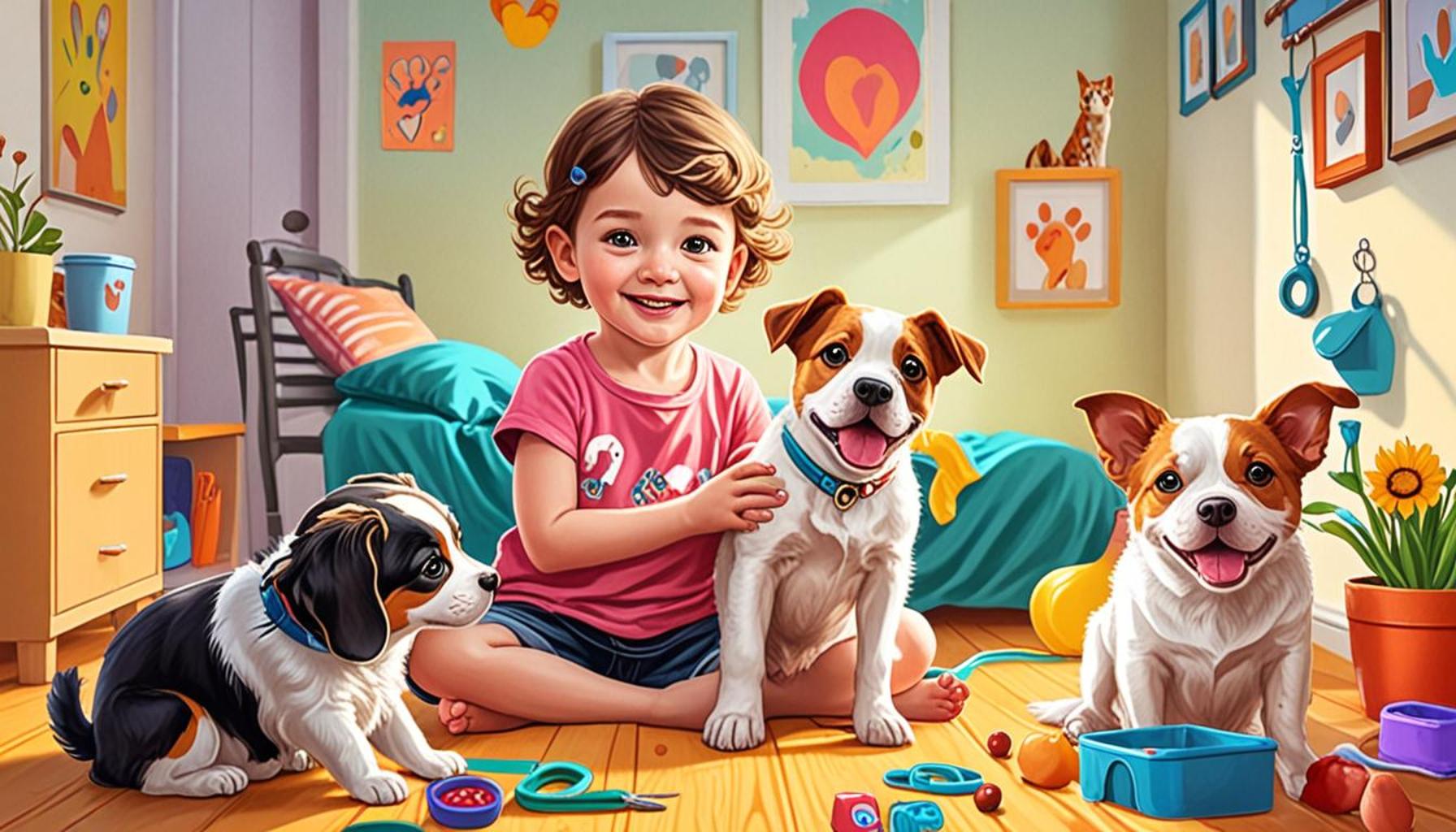The Importance of Socialization and Training in the Animal Adoption Process

Understanding the Foundations of a Successful Adoption
Bringing a new pet into your home is an exciting journey, but it requires more than just love and care. Proper socialization and training play crucial roles in ensuring a smooth transition for both the pet and the owner. These elements create a solid foundation for a lasting relationship.
Why Socialization Matters
Socialization helps pets adapt to their new environment. This essential process involves exposing them to a variety of experiences that will help them feel comfortable and secure in their surroundings. Key aspects of effective socialization include:
- Different people and animals, such as children, strangers, dogs, and even cats, allowing pets to learn appropriate social cues and behaviors.
- Various sounds and sights, from everyday household noises like vacuum cleaners to outdoor experiences like traffic or construction, helping pets adjust to their new life.
- New places and situations, including trips to parks, pet-friendly stores, and the vet’s office, fostering a sense of confidence and adaptability.
By engaging in early socialization, pet owners can significantly reduce instances of fear and anxiety that often arise from the unknown. For instance, a dog that is familiarized with various noises may be less likely to react with panic to thunder or fireworks. Studies indicate that pets who undergo socialization are not only better adjusted but also tend to exhibit fewer behavioral problems as adults.
The Role of Training
Training is equally vital and goes hand in hand with socialization. It teaches pets essential behaviors and commands that can prevent future issues and contribute to a more harmonious living environment. The benefits of training encompass:
- Improved obedience and understanding, which means pets can respond reliably to commands like “sit,” “stay,” and “come,” facilitating better control in various situations.
- Strengthened bond between pet and owner, as training sessions become an opportunity for positive interactions, enhancing mutual trust and affection.
- Safer interactions with humans and other animals, as trained pets are less likely to exhibit aggression or destructive behaviors when faced with new stimuli or encounters.
Furthermore, through effective training methods, such as positive reinforcement, pets are encouraged to repeat good behaviors, creating a feedback loop that benefits both parties. For example, when a dog receives praise or a treat after successfully performing a command, it’s likely to be more motivated to comply in the future. This, in turn, minimizes the potential for behavioral issues, ensuring that pet ownership remains a fulfilling experience.

Ultimately, prioritizing socialization and training is not just beneficial—it’s essential for a fulfilling companionship. By investing time into these processes, adopters can cultivate a positive environment that enhances the overall experience of pet ownership. The journey is not merely about bringing a new pet home; it is about laying down the groundwork for a joyful coexistence that can last a lifetime.
DON’T MISS OUT: Click here to learn more
Building Confidence Through Socialization
When it comes to the animal adoption process, socialization acts as a vital component, particularly for pets who may have faced prior hardships or instability. Animals, just like humans, thrive on familiarity and predictability. By carefully ramping up their exposure to different environments and situations, adopters can help mitigate fear or aggression, which may otherwise hinder a harmonious home life. Understanding the need for effective socialization opens the door to a more inviting world for a newly adopted pet.
Socialization Techniques for Success
The key to successful socialization lies in creating positive experiences. Here are essential techniques to consider when bringing a new pet into your home:
- Start Early: For puppies and kittens, early exposure to various stimuli is crucial. The sensitive period for socialization typically ranges from 3 to 16 weeks of age, depending on the species. During this window, animals are particularly receptive to new experiences.
- Variety is Key: Introduce your pet to a mix of environments, people, and situations. This includes bustling public spaces, quiet parks, and friendly neighbors. Each experience builds their comfort level in adapting to varied circumstances.
- Utilize Training Classes: Group classes offer great opportunities for social interaction while reinforcing basic commands. Additionally, pet owners can seek specialized classes that target specific behavioral issues, aiding in the overall adjustment process.
Further enhancing socialization efforts, research suggests that the duration and frequency of exposure to these experiences should gradually increase. By setting gradual goals, whether it’s a short visit to a pet store or a longer outing at an animal-friendly event, pets can adapt without overwhelming stress.
Linking Socialization to Future Behavior
It’s remarkable to consider that socialization doesn’t just end once the initial introduction is complete. Instead, its ramifications resonate throughout an animal’s life. Studies show that pets who were well-socialized as calves or pups exhibit fewer instances of behavioral issues, such as separation anxiety or aggression toward unfamiliar people and animals. In fact, a well-socialized dog is typically much more relaxed in various unpredictable situations, such as vet visits, car rides, or public gatherings.
The implications of poor socialization, on the other hand, can be grave. Many pets end up in shelters due to behavioral issues stemming from inadequate social exposure. For dog owners especially, neglecting this crucial training component can lead to public safety concerns, as strained animals may lash out or misbehave when faced with anxiety-triggering stimuli.
In conclusion, socialization is not merely an optional step in the animal adoption process; it is a foundational element that enables adopted pets to thrive in their new homes. Investing time and effort into correctly socializing your pet forms the bedrock of a successful relationship, transforming the journey of adoption into one filled with joy and companionship.
The Importance of Socialization and Training in the Animal Adoption Process
In the world of animal adoption, the significance of socialization and training cannot be overstated. These two elements play a crucial role in easing the transition for pets into their forever homes and are essential for ensuring long-term success in the pet-owner relationship. Let’s delve deeper into why these components are vital for the overall adoption process.
| Advantage | Description |
|---|---|
| Enhanced Adaptability | Socialization helps animals acclimate to different environments, reducing anxiety and fostering adaptability in their new homes. |
| Improved Behavior | Training instills good behavior, making pets more pleasant to live with and increasing their chances of successful adoption. |
Socialization should begin at a young age, allowing pets to interact positively with other animals, people, and various stimuli. For instance, introducing dogs to different environments, such as parks or busy streets, while they are still puppies can significantly reduce fearful or aggressive behaviors later in life. Training, on the other hand, encompasses essential commands and discipline that set the foundation for a harmonious relationship between the pet and their owner. Basic commands like “sit,” “stay,” and “come” are vital for safety and provide the pet owner with control in various situations.
The path toward successful animal adoption is paved with knowledge, understanding, and preparation for both the new owner and the pet. Educating potential adopters about the importance of socialization and training can significantly influence the long-term well-being of adopted animals, ensuring they thrive in their new families.
DISCOVER MORE: Click here to learn about the latest trends
Training: The Cornerstone of a Healthy Bond
While socialization is essential in easing the transition into a new environment, training plays an equally pivotal role in establishing a solid framework for behavior. Proper training not only sharpens a pet’s skills but also strengthens the bond between the owner and their newly adopted animal. A well-trained pet is typically a happier and healthier one, as they understand clear expectations which enhance their overall quality of life.
The Benefits of Effective Training
Training benefits both the pet and the owner, leading to improved dynamics in the household. Below are several noteworthy advantages:
- Encouraging Good Behavior: Basic commands such as sit, stay, and come can significantly reduce problematic behaviors. Consistent training helps pets understand boundaries and desired actions, making it easier for them to navigate their home environment.
- Building Trust and Confidence: Training strengthens the human-animal bond, erasing doubts that a pet may have about their owner or their surroundings. By using positive reinforcement techniques, such as treats or praise, pet owners can cultivate a safe space while boosting their pet’s self-esteem.
- Preventing Behavior Issues: Structured training sessions can prevent potential behavioral issues from manifesting later on. For instance, failure to train a dog to walk on a leash properly could result in difficulties during outings; an unmanageable pet may become a source of frustration for both the owner and unsuspecting bystanders.
Tailoring Training to Individual Needs
Training is not a one-size-fits-all approach. Different species and individual animals require tailored strategies that cater to their unique needs. For example, a rescue dog may have lingering anxiety, demanding specialized training interventions to address their specific triggers. Young puppies or kittens, however, might benefit from prioritizing social skills as well as basic commands. Tailoring these training sessions is essential, as understanding an animal’s history and personality can effectively enhance their learning experience.
Studies indicate that positive reinforcement, which involves rewarding desirable behaviors rather than punishing unwanted ones, is the most effective training method. This approach not only aids learning but also helps in minimizing fear-related behaviors that could arise from more disciplinary techniques. Research from animal behavior experts has underscored the significance of patience, consistency, and time investment required to shape a well-trained animal.
Community Resources for Training and Socialization
New pet owners often benefit from looking into local resources that provide training and socialization opportunities. Pet training facilities, obedience classes, and reputable dog trainers can offer invaluable insights. Additionally, pet adoption organizations frequently host workshops and meet-ups that emphasize social skills, allowing new pets to mingle while learning optimal behavior in a supportive environment. Engaging with fellow pet owners can also forge connections and provide emotional support during the adjustment period.
In summation, socialization and training are indispensable facets of the animal adoption process. They not only prepare pets for a new life but also significantly uplift the potential for a long-lasting and fulfilling relationship between pets and their humans. By investing effort into these crucial areas, adoption can transform into a genuinely rewarding journey for both parties involved.
DISCOVER MORE: Click here for helpful tips
Conclusion: Fostering Lifelong Connections
The journey of animal adoption is a profound experience that transcends mere ownership; it is a commitment to nurturing a bond built on trust, understanding, and companionship. As this article has illustrated, socialization and training are essential components that enhance both the pet’s adjustment and the overall dynamic of the household. Through effective socialization, animals learn to navigate their new environments confidently, reducing anxiety and promoting well-being as they adapt to their forever homes.
Moreover, harnessing the power of proper training cannot be overstated. By investing in training practices that cater to individual needs and reinforce positive behaviors, pet owners not only establish clear expectations but also cultivate a deep, supportive relationship with their animals. This dual approach ensures that pets become secure and content members of the household, ready to flourish in their new lives.
In a world where many pets are still in need of loving homes, adopting an animal comes with newfound responsibilities. By prioritizing socialization and training during this pivotal transition, we unlock the doors to a fulfilling companionship that not only benefits the pet but also enhances the human experience. From community resources to professional training programs, there is a wealth of support available for new adopters. As we strive to create a more compassionate environment for animals, the importance of socialization and training in animal adoption remains an ever-relevant subject—a pathway to ensuring that these bonds endure and thrive for years to come.


